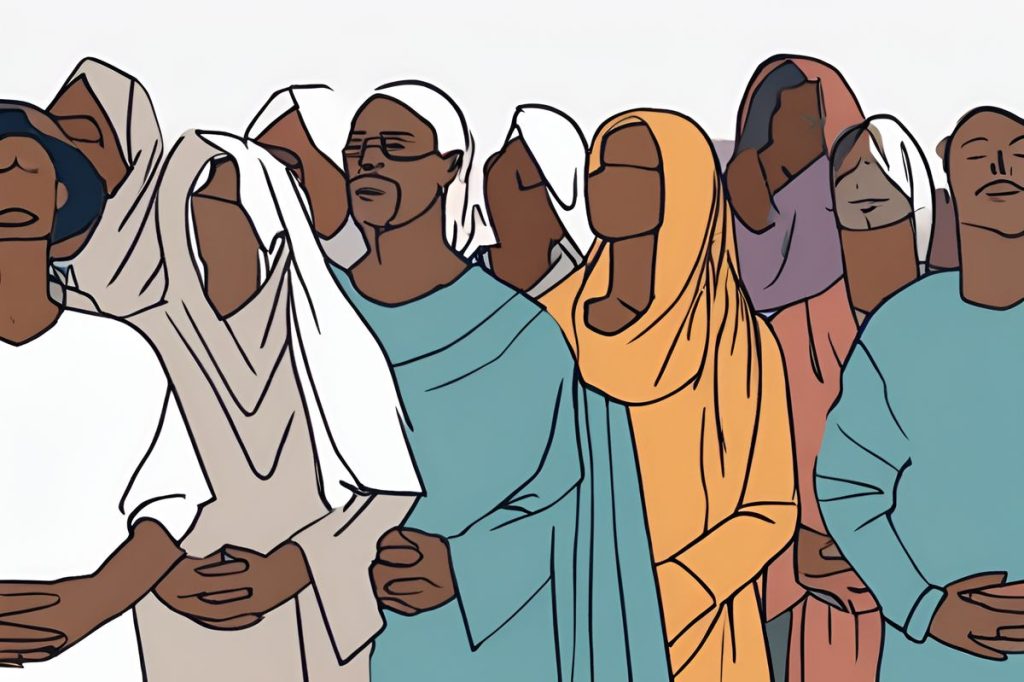Hala Sultan Tekkesi in Larnaca, Cyprus, is a revered Islamic site where pilgrims gather during Eid al-Fitr to honor Umm Haram, a companion of the Prophet Muhammad, making it the fourth most important Islamic site globally. This transformation into a sacred space showcases the island’s rich multicultural heritage and its role as a spiritual and historical landmark, welcoming devout followers for prayer and devotion as a testament to their faith.
What is the significance of Hala Sultan Tekke in Larnaca, Cyprus?
Hala Sultan Tekke in Larnaca is the fourth most important Islamic site globally, revered as the resting place of Umm Haram, a companion of the Prophet Muhammad. During Eid al-Fitr, it transforms into a pilgrimage site, exclusively for prayer and devotion, reflecting the island’s rich multicultural heritage and its role as a spiritual and historical landmark.
Pilgrimage and Piety at Hala Sultan Tekkesi
The revered Hala Sultan Tekkesi in Larnaca is closed to visitors on Thursday, as the second day of Eid al-Fitr is observed. This closure is in anticipation of the traditional pilgrimage, a significant event that garners the devout from far and wide. On this solemn day, the Tekke, which typically welcomes a diverse crowd of visitors, transforms into a space solely for those practicing their faith from 10am to 3pm.
Regarded as a cornerstone of Islamic faith in Cyprus, the Hala Sultan Tekkesi stands as a testament to the island’s historical tapestry, where cultures intertwine. Its significance is not just local but global, with Islamic scholars recognizing it as the fourth most important Islamic site, following the revered cities of Mecca, Medina, and Jerusalem. Its global importance is a reflection of both religious devotion and the island’s place at the crossroads of civilizations.
The Spiritual Significance of Umm Haram’s Resting Place
Nestled within the serene landscape surrounding Larnaca’s salt lake, Hala Sultan Tekkesi is far more than an architectural wonder; it is the resting place of Umm Haram. Known as Hala Sultan within Turkish tradition, she was married to Ubada bin al-Samit—a companion of the prophet Mohamed. Her grave has been a beacon of reverence, drawing pilgrims who seek spiritual solace and connection in the presence of her sanctified tomb.
The historical narrative tells a tale of Umm Haram’s death, which occurred during a visit to Cyprus. According to legend, she fell from her mule and was laid to rest where the Tekke currently stands. Over time, the site has evolved into a holy place, encapsulating the history and spiritual journeys of countless individuals.
A Day of Reflection
On this day, individuals from across the globe who share the Islamic faith come together, converging on this sacred site to mark Eid al-Fitr. This festival, signaling the end of the fasting month of Ramadan, is a moment of both celebration and contemplation. It’s a time when the faithful engage in prayers and acts of charity, reflecting on the core tenets of their belief.
The practice of pilgrimage to Hala Sultan Tekkesi is a powerful demonstration of faith, as participants engage in prayer and seek blessings. It’s a moment that transcends the everyday, offering a glimpse into the heart of a tradition that has been passed down through generations.
Cultural Intersection
Hala Sultan Tekkesi’s closure during the Eid pilgrimage is a poignant reminder of Cyprus’s rich multicultural heritage. The island, positioned at a geographical crossroads, has long been a mosaic of cultural and religious identities. This diversity is celebrated through the respect and accommodation of different religious observances, such as the Eid pilgrimage, which highlights the island’s tapestry of human experience.
The Tekke’s ability to close its doors to visitors and open them exclusively for religious purposes underlines the strength of intercultural dialogue and mutual respect. It’s a practice that illustrates how spaces can serve multiple roles, acting as both tourist destinations and sacred grounds, depending on the day’s needs and events.
What is the significance of Hala Sultan Tekke in Larnaca, Cyprus?
Hala Sultan Tekke in Larnaca is the fourth most important Islamic site globally, revered as the resting place of Umm Haram, a companion of the Prophet Muhammad. During Eid al-Fitr, it transforms into a pilgrimage site, exclusively for prayer and devotion, reflecting the island’s rich multicultural heritage and its role as a spiritual and historical landmark.
Why is Hala Sultan Tekkesi closed to visitors on Thursdays during Eid al-Fitr?
Hala Sultan Tekkesi in Larnaca is closed to visitors on Thursdays during Eid al-Fitr in preparation for the traditional pilgrimage that takes place on the second day of the festival. During this time, the Tekke is dedicated solely to devout followers who come to practice their faith and engage in prayers from 10am to 3pm.
What is the historical significance of Umm Haram’s resting place at Hala Sultan Tekkesi?
Umm Haram, also known as Hala Sultan, was a companion of the Prophet Muhammad and is believed to be buried at Hala Sultan Tekkesi in Larnaca. Her grave has become a sacred site that draws pilgrims seeking spiritual connection and solace. Legend has it that she died during a visit to Cyprus and was buried at the location where the Tekke now stands.
How does the pilgrimage to Hala Sultan Tekkesi reflect the cultural intersection in Cyprus?
The pilgrimage to Hala Sultan Tekkesi during Eid al-Fitr highlights Cyprus’s rich multicultural heritage and its role as a crossroads of civilizations. The closure of the Tekke for visitors on this day underscores the respect for different religious observances and the accommodation of diverse cultural identities on the island. It serves as a testament to the strength of intercultural dialogue and mutual respect in Cyprus.

